We’ve selected some frequent asked questions to help you with any concerns of doubts about pools in general
How long should I wait to get into the water after the water treatment?
How long to wait after a treatment depends on the chemicals you are adding.
Typically, you will want to wait for the water to turn over one full time (all the water to pass through the filter), which typically takes 8 to 12 hours.
How often do I need to test my pool water?
Weekly testing works for most backyard pools, but the best bet is to test your pH and chlorine levels at least twice per week. Chlorine should be fed continuously through a chemical feeding device to maintain a consistent level.
What causes Chlorine odor, red eyes and itchy skin?
These unpleasant conditions indicate that the pool water has not been properly treated. A common cause is high levels of chloramines, formed when chlorine combines with body oils, perspiration, urine and other contaminants brought into pools by swimmers.
Contrary to what most people think, a strong chemical smell is not an indication of too much chlorine in the pool. In fact, the pool may actually need additional chlorine treatment to get rid of chloramines and sanitize the water.
What is the Correct Balance for My Pool Water?
How do I measure water evaporation from my pool?
You can measure water evaporation in your pool by doing the bucket test.
Place a five gallon bucket on the second pool step and fill it to match the water level of the pool (probably have to put concrete block in bucket before you fill it with water to help keep in place). Over the course of 2-3 days the bucket will lose water from evaporation and gain water from rainfall at the same rate as your pool! As long as there is no splash-out or backwashing during that time, if the pool level drops more than the bucket level then you have a leak.
How often do I need to add salt to my saltwater pool?
Salt is added to the water at the time of installation. After that, only top-up salt is required to make up for salt lost through water splash-out, overflow due to rain, filter back-flushing, leaks in the pool etc. Evaporation does not reduce the salt level nor is the salt consumed in the saltwater system process.
The ideal salt level is between 2700-3400 ppm (parts per million) with 3200 ppm being optimal. Before adding salt to your pool, test the water to check your salt level.
Why is my pool cloudy, and how can I clear it up?
Several causes of a cloudy pool could be the pH is not in proper range, high amounts of calcium or the filter needs to be cleaned. Make sure all levels are within proper range and then clean the filter. If you have a sand filter, this doesn’t necessarily mean to replace the sand but clean the filter with a filter cleanser.

